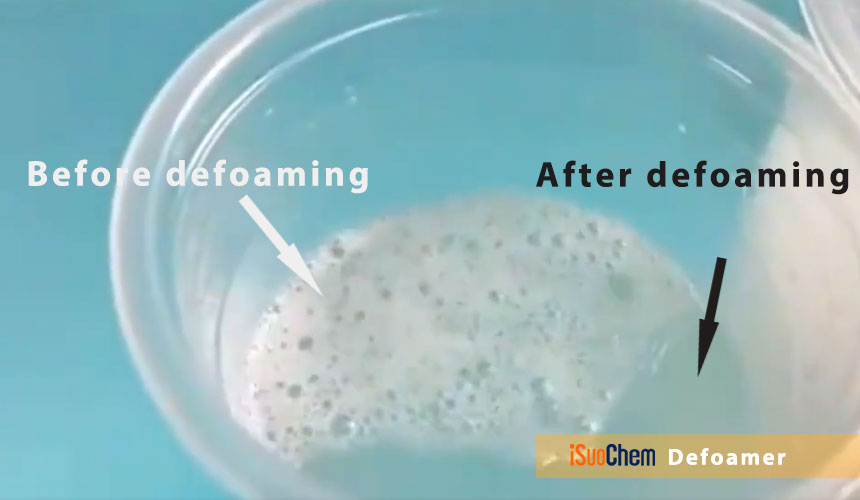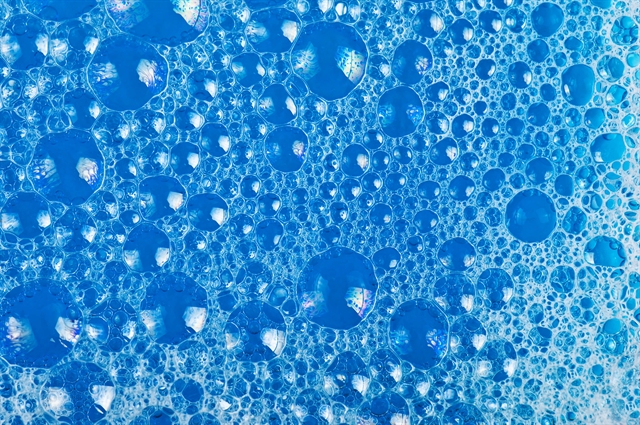Discover the Environmental Impact of Defoamers in Industrial Applications
Discover the Environmental Impact of Defoamers in Industrial Applications
Blog Article
The Role of Defoamers in Enhancing Item Top Quality and Performance
Defoamers serve as crucial additives that alleviate this concern, ensuring smoother production process while improving the aesthetic and useful qualities of the last items. The selection of the ideal defoamer can be important to achieving optimal outcomes, elevating crucial concerns about solution compatibility and efficiency metrics that warrant more expedition.
Comprehending Defoamers
Understanding the duty of defoamers is important for keeping product high quality throughout different industries. Defoamers are chemical additives created to prevent the formation and reduce of foam in fluid systems, which can adversely affect procedures such as mixing, filling up, and surface stress. Lathering can lead to ineffectiveness, product flaws, and compromised visual charm, making defoamers an essential component in manufacturing operations.
In commercial applications, defoamers aid to enhance item consistency and stability. In the paint and layers industry, foam can interfere with the application procedure and the last finish. In food and beverage manufacturing, excessive foam can hinder bottling and packaging efficiency. The effective usage of defoamers not only ensures smoother production processes yet additionally contributes to premium product performance.
Moreover, the choice and formulation of a defoamer must line up with particular application needs, such as compatibility with other components, effectiveness under differing temperature and pH problems, and possible regulatory constraints. Eventually, understanding defoamers' functions and their importance in various formulations is essential for optimizing manufacturing and making sure the highest possible high quality final result.
Kinds Of Defoamers
Defoamers can be classified right into a number of kinds based on their structure and device of action. The main types include silicone-based, non-silicone organic, and inorganic defoamers.
Silicone-based defoamers are among one of the most effective, mostly as a result of their ability to spread out promptly on the liquid surface and disrupt foam development. Their unique chemical structure allows for exceptional stability, making them ideal for high-temperature applications and settings with differing pH levels.
Non-silicone natural defoamers, often composed of natural oils or fats, are valued for their biodegradability and lower poisoning. These are commonly used in food and beverage applications where safety and security and environmental effect are extremely important.
Not natural defoamers, which include substances like talc or calcium carbonate, act by increasing the thickness of the fluid, therefore reducing foam stability. They are often utilized in commercial procedures where compatibility with other products is not an issue.
Each kind of defoamer has unique advantages and constraints, permitting customized services depending upon the certain lathering concerns run into in different applications. Understanding these differences is essential for maximizing efficiency and attaining preferred product top quality.
Applications Across Industries
Many sectors take advantage of defoamers to boost product quality and functional effectiveness. In the food and beverage industry, defoamers are crucial in processes such as brewing and dairy production to stop foam development, which can lead to inadequacies and product inconsistency. By managing foam, suppliers can make certain better return and a more uniform item.
In the pharmaceutical sector, defoamers play a crucial role in the solution of fluid drugs, where too much foam can hamper blending and exact dosing. Their usage assists preserve the honesty of the solutions and assists in smoother production processes.
The paint and layers industry likewise click to read counts on defoamers to enhance the efficiency of products throughout application. By reducing foam, these ingredients ensure a smoother surface and boost the discover this visual top qualities of the end product.

Advantages of Utilizing Defoamers
While the application of defoamers varies throughout sectors, their benefits constantly improve item high quality and process efficiency. One considerable advantage is the decrease of foam development throughout making processes, which can otherwise lead to manufacturing hold-ups and disparities in product high quality. By minimizing foam, defoamers make it possible for a smoother circulation of products, assisting in much more efficient procedures and minimizing the chance of tools malfunctions.
Additionally, using defoamers can enhance the appearance and appearance of last items. In fields such as coverings, paints, and food handling, too much foam can endanger the visual aesthetics and total top quality, while the ideal defoamer application makes sure a consistent surface and desirable attributes. Additionally, defoamers can contribute to cost financial savings by reducing waste throughout manufacturing and maximizing using resources (defoamers).

Selecting the Right Defoamer
Selecting the right defoamer is important for optimizing manufacturing procedures and making sure item top quality. The go now option of defoamer influences not only the effectiveness of foam control however additionally the general performance characteristics of the end product. Factors to take into consideration consist of the sort of application, the chemistry of the solution, and the environmental problems under which the item will certainly be made use of.
Various sectors may call for specific defoamer kinds, such as silicone-based, organic, or polymeric defoamers. Recognizing the compatibility of the defoamer with the main ingredients is necessary to avoid unfavorable responses that can compromise item honesty. In addition, the defoamer's performance in various temperature levels and pH levels must be reviewed to guarantee regular performance.
Checking the defoamer in small-scale applications can give beneficial insights right into its performance and viability. Factor to consider of governing conformity, especially in food, drugs, and cosmetics, is critical in picking a defoamer. Eventually, a comprehensive analysis of these factors will result in the choice of a defoamer that not just regulates foam successfully but likewise improves the high quality and efficiency of the final item.
Verdict

In final thought, defoamers are vital ingredients that dramatically improve product high quality and performance across different industries. The critical selection and application of defoamers lead to cost savings, maximized resource use, and boosted client complete satisfaction.
Lathering can lead to inefficiencies, item defects, and endangered visual appeal, making defoamers an essential element in manufacturing procedures.

Report this page